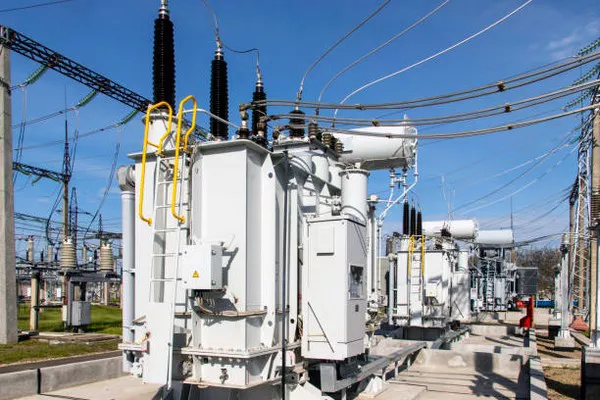Transformers are indispensable devices in the field of electrical engineering, serving the crucial function of transferring electrical energy between different voltage levels. Traditionally, transformers have been associated with alternating current (AC) systems due to their ability to efficiently change voltage levels without significant losses. However, with the growing prominence of direct current (DC) systems, questions arise regarding the compatibility of transformers with DC power transmission. This article delves into the intricacies of transformers’ interaction with DC systems, exploring the challenges, advancements, and potential applications of using transformers in DC environments.
See Also: Exploring the Ingenious Functioning of Electrical Transformers
The Traditional AC Transformer
In an AC transformer, voltage is induced across a secondary winding through electromagnetic induction. The alternating current flowing in the primary winding generates a fluctuating magnetic field, which in turn induces voltage in the secondary winding. This process is governed by Faraday’s law of electromagnetic induction, and it forms the foundation of AC power distribution systems. AC transformers are widely used to step up or step down voltage levels, enabling efficient long-distance power transmission and voltage conversion.
Challenges with DC Transformers
While transformers have proven their efficiency in AC systems, the transition to DC systems poses unique challenges due to the absence of alternating magnetic fields. In DC systems, there is a constant current flow, resulting in a steady magnetic field that doesn’t undergo the periodic changes required for traditional transformer operation. Consequently, conventional AC transformers are ill-suited for DC power transmission.
Advancements in DC Transformer Technology
Overcoming the limitations of conventional transformers in DC systems has been a subject of research and development. Several advancements have been made to adapt transformer technology for DC applications:
1. DC-DC Converters:
These devices are capable of stepping up or stepping down DC voltage levels, mimicking the behavior of traditional transformers. DC-DC converters utilize semiconductor switches, such as insulated gate bipolar transistors (IGBTs), to control the flow of current and generate the desired output voltage. They effectively enable voltage transformation and regulation in DC systems, playing a role similar to that of AC transformers in AC systems.
2. Hybrid Transformers:
Researchers have explored hybrid transformer designs that incorporate both AC and DC components. These designs aim to combine the efficiency of traditional AC transformers with the adaptability required for DC systems. By integrating DC-DC converters into transformer structures, these hybrids facilitate voltage conversion while maintaining the core principles of transformer operation.
3. Pulse-Link Transformers:
A newer concept involves the use of high-frequency pulses to create transient magnetic fields, which can then induce voltage changes in the secondary winding. This approach enables voltage transformation in DC systems by simulating the alternating magnetic fields present in AC transformers. Pulse-link transformers are a promising avenue for efficient DC power transmission and conversion.
Applications and Implications
The successful integration of transformers into DC systems holds significant implications for various sectors:
Renewable Energy: Many renewable energy sources, such as solar panels and wind turbines, generate DC power. Adapting transformers to work with DC could enhance the efficiency of power conversion, transmission, and distribution from these sources.
Data Centers: Modern data centers rely heavily on DC power due to the prevalence of electronic devices that operate on DC. Incorporating efficient transformers into DC power infrastructure can optimize energy utilization and reduce losses.
Electric Vehicles: As electric vehicles (EVs) become more common, efficient DC charging infrastructure is crucial. DC transformers could facilitate rapid charging by efficiently converting and transmitting power to EV batteries.
Remote Areas: In remote areas with limited access to AC power grids, DC systems, often powered by solar panels or batteries, are gaining popularity. DC transformers could enhance the efficiency of power distribution in such environments.
Challenges and Considerations
While the progress in DC transformer technology is promising, certain challenges and considerations must be addressed:
Efficiency: DC-DC conversion processes inherently introduce some energy losses. Efforts to design and implement efficient DC transformers must prioritize minimizing these losses to ensure cost-effectiveness and sustainability.
Safety: The design and operation of DC transformers need to adhere to stringent safety standards. This includes addressing issues such as insulation, overcurrent protection, and fault management to ensure the reliable and secure operation of these devices.
Integration: Integrating DC transformers into existing DC power systems, especially in sectors like renewable energy and transportation, requires careful planning and compatibility assessment.
Cost: Developing and implementing new transformer technologies can entail higher costs initially. As these technologies mature and scale, cost considerations should be weighed against the long-term benefits they offer.
Conclusion
The compatibility of transformers with DC systems is a topic that has gained traction with the rise of DC power applications. While traditional AC transformers are unsuitable for DC systems due to the absence of alternating magnetic fields, advancements in technology have led to the development of DC-DC converters, hybrid transformers, and pulse-link transformers. These innovations show promise in enabling efficient voltage conversion and power transmission in DC environments. As industries such as renewable energy, data centers, electric vehicles, and remote power distribution continue to expand, the integration of efficient DC transformers could significantly enhance their operations, energy utilization, and sustainability. However, challenges related to efficiency, safety, integration, and cost must be carefully addressed to realize the full potential of transformers in DC systems.

